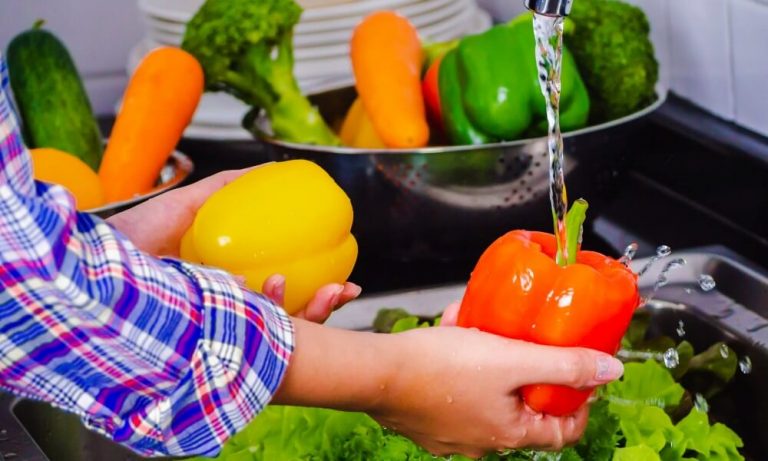
Washing fresh fruits and vegetables in cool water before eating them is a good practice when it comes to health hygiene and food safety.
Note that fresh produce should not be washed until right before you’re ready to eat it. Washing fruits and vegetables before storing them may create an environment in which bacterial growth is more likely.
Before you begin washing fresh produce, wash your hands well with soap and water. Be sure that any utensils, sinks, and surfaces you’re using to prepare your products are also thoroughly cleaned first.
Begin by cutting away any bruised or visibly rotten areas of fresh produce. If you’re handling fruit or vegetable that’ll be peeled, such as orange, wash it before peeling it to prevent any surface bacteria from entering the flesh.
The general methods to wash produce are as follows (3Trusted Source):
- Firm produce. Fruits with firmer skins like apples, lemons, and pears, as well as root vegetables like potatoes, carrots, and turnips, can benefit from being brushed with a clean, soft bristle to better remove residues from their pores.
- Leafy greens. Spinach, lettuce, Swiss chard, leeks, and cruciferous vegetables like Brussels sprouts and bok choy should have their outermost layer removed, then be submerged in a bowl of cool water, swished, drained, and rinsed with fresh water.
- Delicate produce. Berries, mushrooms, and other types of products that are more likely to fall apart can be cleaned with a steady stream of water and gentle friction using your fingers to remove grit.
Once you have thoroughly rinsed your produce, dry it using a clean paper or cloth towel. More fragile produce can be laid out on the towel and gently patted or rolled around to dry them without damaging them.
Before consuming your fruits and veggies, follow the simple steps above to minimize the number of germs and substances that may be on them.
SUMMARY
Most fresh fruits and veggies can gently be scrubbed under cold running water (using a clean soft brush for those with firmer skins) and then dried. It can help to soak, drain, and rinse produce that has more dirt-trapping layers.
The bottom line
Practicing good food hygiene is an important health habit. Washing fresh produce helps minimize surface germs and residues that could make you sick.
Recent fears during the COVID-19 pandemic have caused many people to wonder whether more aggressive washing methods, such as using soap or commercial cleaners on fresh produce, are better.
Health professionals agree that this isn’t recommended or necessary — and could even be dangerous. Most fruits and vegetables can be sufficiently cleaned with cool water and light friction right before eating them.
Produce that has more layers and surface area can be more thoroughly washed by swishing it in a bowl of cool water to remove dirt particles.
Fresh fruits and vegetables offer a number of healthy nutrients and should continue to be eaten, as long as safe cleaning methods are practiced.
